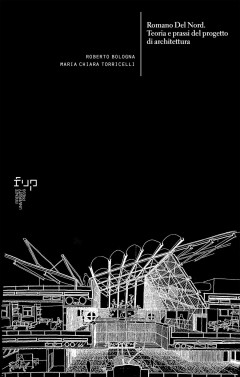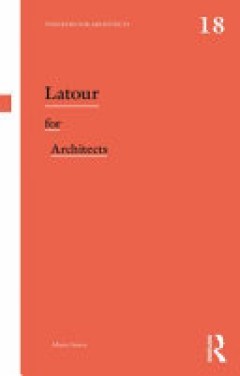Ditapis dengan

ARCHITECTURE AND DEVELOPMENT :ISRAELI CONSTRUCTION IN SUB-SAHARAN AFRICA AND …
comPosing these notes during the coviD- 19 pandemic deepens my appreciation of the intellectual community that sustains prolonged efforts such as writing a book—and renders them worthwhile. From its beginning as a seminar paper, Architecture and Development has owed its formation at every step to an always converging and diverging circle of friends and family, mentors and colle…
- Edisi
- -
- ISBN/ISSN
- 9781478091820
- Deskripsi Fisik
- ix, 337p.; ill.
- Judul Seri
- -
- No. Panggil
- 720.95694 ARC l

NEW ISLAMIC URBANISM :THE ARCHITECTURE OF PUBLIC AND PRIVATE SPACE IN JEDDAH,…
Since the dawn of the oil era, cities in Saudi Arabia have witnessed rapid growth and profound societal changes. As a response to foreign architectural solutions and the increasing popularity of Western lifestyles, a distinct style of architecture and urban planning has emerged. Characterised by an emphasis on privacy, expressed through high enclosures, gates, blinds, and tinted windows, ‘New…
- Edisi
- -
- ISBN/ISSN
- 9781787356429
- Deskripsi Fisik
- xvii, 239 p. ill;
- Judul Seri
- -
- No. Panggil
- 720.9538 NEW S

THE COVERT LIFE OF HOSPITAL ARCHITECTURE
The Covert Life of Hospital Architecture addresses hospital architecture as a set of interlocked, overlapping spatial and social conditions. It identifies ways that planned-for and latent functions of hospital spaces work jointly to produce desired outcomes such as greater patient safety, increased scope for care provider communication and more intelligible corridors. By advancing space synt…
- Edisi
- -
- ISBN/ISSN
- 9781800080881
- Deskripsi Fisik
- xxi, 187 p. ill;
- Judul Seri
- -
- No. Panggil
- 725.51 COV J

ARCHITECTURE AND FIRE :A PSYCHOANALYTIC APPROACH TO CONSERVATION
Architecture and Fire develops a conceptual reassessment of architectural conservation through the study of the intimate relationship between architecture and fire. Stamatis Zografos expands on the general agreement among many theorists that the primitive hut was erected around fire – locating fire as the first memory of architecture, at the very beginning of architectural evolution. Follo…
- Edisi
- -
- ISBN/ISSN
- 9781787353701
- Deskripsi Fisik
- xiv, 210p.; ill.
- Judul Seri
- -
- No. Panggil
- 720.288 ARC z

ARCHITECTURE AS A WAY OF SEEING AND LEARNING :THE BUILT ENVIRONMENT AS AN ADD…
At the beginning of 2020, 66 long-term refugee camps existed along the East African Rift. Millions of young children have been born at the camps and have grown up there, yet it is unknown how their surrounding built environments affect their learning and development. Architecture as a Way of Seeing and Learning presents an architect’s take on questions many academics and humanitarians ask.…
- Edisi
- -
- ISBN/ISSN
- 9781800080119
- Deskripsi Fisik
- xvii, 189 p. ill;
- Judul Seri
- -
- No. Panggil
- 720.10309676 ARC N

RESISTING POSTMODERN ARCHITECTURE :CRITICAL REGIONALISM BEFORE GLOBALISATION
Since its first appearance in 1981, critical regionalism has enjoyed a celebrated worldwide reception. The 1990s increased its pertinence as an architectural theory that defends the cultural identity of a place resisting the homogenising onslaught of globalisation. Today, its main principles (such as acknowledging the climate, history, materials, culture and topography of a specific place) are …
- Edisi
- -
- ISBN/ISSN
- 9781800081338
- Deskripsi Fisik
- xxiii, 394 p. ill;
- Judul Seri
- -
- No. Panggil
- 724.6 RES S

POST-WAR ARCHITECTURE BETWEEN ITALY AND THE UK :EXCHANGES AND TRANSCULTURAL I…
Italy and the UK experienced a radical re-organisation of urban space following the devastation of many towns and cities in the Second World War. The need to rebuild led to an intellectual and cultural exchange between a wave of talented architects, urbanists and architectural historians in the two countries. Post-war Architecture Between Italy and the UK studies this exchange, exploring how th…
- Edisi
- -
- ISBN/ISSN
- 9781800080836
- Deskripsi Fisik
- xi, 277 p. ill;
- Judul Seri
- -
- No. Panggil
- 724.6 POS L

ROMANO DEL NORD. TEORIA E PRASSI DEL PROGETTO DI ARCHITETTURA
Romano Del Nord has been a point of reference for Architectural Technology and a protagonist in academic research and the realization of building programs. Meditating on his work brings out the relationship between research, cultural and social commitment and realization skills that distinguished his mindset and his way of acting. The book offers a reasoned rereading of his writings, drawn from…
- Edisi
- -
- ISBN/ISSN
- 9788855183192
- Deskripsi Fisik
- 482 p
- Judul Seri
- -
- No. Panggil
- 720 ROB r

LATOUR FOR ARCHITECTS
Bruno Latour is one of the leading figures in Social Sciences today, but his contributions are also widely recognised in the arts. His theories ‘flourished’ in the 1980s in the aftermath of the structuralism wave and generated new concepts and methodologies for the understanding of the social. In the past decade, Latour and his Actor-Network Theory (ANT) have gained popularity among researc…
- Edisi
- -
- ISBN/ISSN
- 9780429328510
- Deskripsi Fisik
- xiv + 141 p
- Judul Seri
- -
- No. Panggil
- 720.1 YAN l

RETHINKING THE INTERNET OF THINGS : A SCALABLE APPROACH TO CONNECTING EVERYTHING
Apress is proud to announce that Rethinking the Internet of Things was a 2014 Jolt Award Finalist, the highest honor for a programming book. And the amazing part is that there is no code in the book. Over the next decade, most devices connected to the Internet will not be used by people in the familiar way that personal computers, tablets and smart phones are. Billions of interconnected devi…
- Edisi
- -
- ISBN/ISSN
- 9781430257417
- Deskripsi Fisik
- xxvi, 192p. : ill.
- Judul Seri
- -
- No. Panggil
- 004 DAC r

SAFE PERFORMANCE IN A WORLD OF GLOBAL NETWORKS : CASE STUDIES, COLLABORATIVE …
This open access book provides an analytical and critical outlook, by leading scholars, of the impact of various trends in the quality of collaboration and resulting safety outcomes that arise from the evolution of traditional integrated production within a single firm into a complex web of partnerships and supply chains. In the face of increasing fragmentation within industrial production and …
- Edisi
- 1
- ISBN/ISSN
- 978-3-031-35163-1
- Deskripsi Fisik
- V, 106 ; 5 illustrations in colour
- Judul Seri
- -
- No. Panggil
- 600 JEA s
 Karya Umum
Karya Umum  Filsafat
Filsafat  Agama
Agama  Ilmu-ilmu Sosial
Ilmu-ilmu Sosial  Bahasa
Bahasa  Ilmu-ilmu Murni
Ilmu-ilmu Murni  Ilmu-ilmu Terapan
Ilmu-ilmu Terapan  Kesenian, Hiburan, dan Olahraga
Kesenian, Hiburan, dan Olahraga  Kesusastraan
Kesusastraan  Geografi dan Sejarah
Geografi dan Sejarah